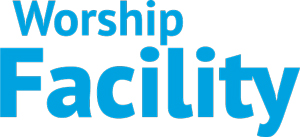AI-powered risk mitigation and threat detection platforms are proactive guardians, helping any organization or facility where large numbers of people gather, including houses of worship, to strengthen their approach to organizational safety. These platforms don’t just identify risks; they proactively protect against day-to-day hazards, including slipping hazards, fallen persons, trespassing, and unauthorized vehicles, as well as more critical incidents such as weapon detection and violent acts. When overlayed with existing video surveillance systems, the software continually monitors live camera feeds to detect threats in real-time, providing a constant shield of protection.
Albeit important, a risk mitigation and threat detection platform is just one aspect of a layered security solution for houses of worship, which need three key capabilities from their overarching communication and security solution: 1) detect potential or active problems, 2) notify the right people instantly and effectively, and 3) manage incidents to a successful resolution. Achieving those goals requires a robust solution that includes a mass notification system, video surveillance coupled with AI machine learning risk mitigation software, and a central platform to automate announcements and response plans. The seamless integration of these systems can enhance situational awareness, improve response times, and provide real-time information to facility personnel and the public.
How risk mitigation works
Risk mitigation and threat detection solutions turn a traditionally reactive or archiving system of security cameras into a proactive, accurate detection system without adding additional security headcount. By pairing breakthrough AI technology with existing camera infrastructure, the platforms create a solution that protects against a growing collection of risks, including gun violence and less severe risks, such as slip and fall hazards, trespassing, and more. The AI technology analyzes patterns and anomalies in the camera feeds without storing or using personally identifiable information (PII) or facial recognition. Some platforms use a simple, non-disruptive connection between cameras and a video management system, router, or switch — all that’s needed is minimal space for equipment, power, and a network connection.
They autonomously scan for hazards in real-time without human characteristics that include getting bored, fatigued, or distracted. They continue to learn and refine their data sets of risk identification over time. Once a risk is identified, they can initiate pre-programmed notification processes based on alert severity through a central mass communication platform. Those notifications can include audio and visual responses onsite via mass notification endpoints and alerts to staff, stakeholders, and law enforcement via text or desktop notifications.
These highly scalable platforms are suitable for houses of worship of all sizes. They can be tailored to meet specific security needs, whether for a small sanctuary or a large campus. The system’s flexibility allows for customization based on the unique requirements of different environments, ensuring that the platform can adapt to changing security needs.
Risk mitigation example
One of Iowa’s fastest-growing K-12 school districts was looking for a way to make its buildings safer without interrupting the learning environment, creating privacy issues, or overspending its budget. Rising gun violence was a top concern, but so was securing the buildings in the evenings and on weekends.
This K-12 district installed a risk mitigation and threat detection platform and customized its detection parameters based on its specific needs. Different alerts were created based on the type of hazard detected, and the system was programmed to alert appropriate people responsible for that type of threat via a central software solution when a detection occurred. There were no privacy issues because the platform does not store PII or use facial recognition.
The platform provides multiple levels of protection for a variety of situations, such as students in the building alone after hours. Pre-determined stakeholders receive a trespassing alert, allowing administrators to address the situation immediately. If an injury had occurred and a student was unable to get up, a fallen person alert would have ensured help arrived quickly. The district’s administrators used this example to re-educate staff on potential liabilities and the importance of complying with standard operating procedures.
In less than one year, the district was alerted to 829 risks, including spills, falls, trespassing, and more.
Mitigating the future
Risk mitigation and threat detection platforms are becoming indispensable in modern security plans. The rapid dissemination of information during emergencies, coupled with advanced risk detection technologies, enhances overall safety and preparedness. Organizations can successfully implement these advanced security measures by fostering collaboration across departments, ensuring transparent communication, and emphasizing the long-term benefits. As the security landscape continues to evolve, embracing these technologies is essential for maintaining robust and adaptive security strategies. With continuous advancements in AI and machine learning, risk mitigation platforms will evolve to offer even more sophisticated threat detection capabilities.
About the author
Alex Puorro, VP of IP Endpoints at AtlasIED, is part of the pre-sales strategy team. He has experience in channel and strategic partnerships, heading up preferred partner programs such as Cisco. Puorro has knowledge of and influence in the IP endpoint product development process, as he remains close to both integrators in the field and AtlasIED product and software engineers, ensuring that AtlasIED solutions address the challenges that integrators and their clients commonly face.

